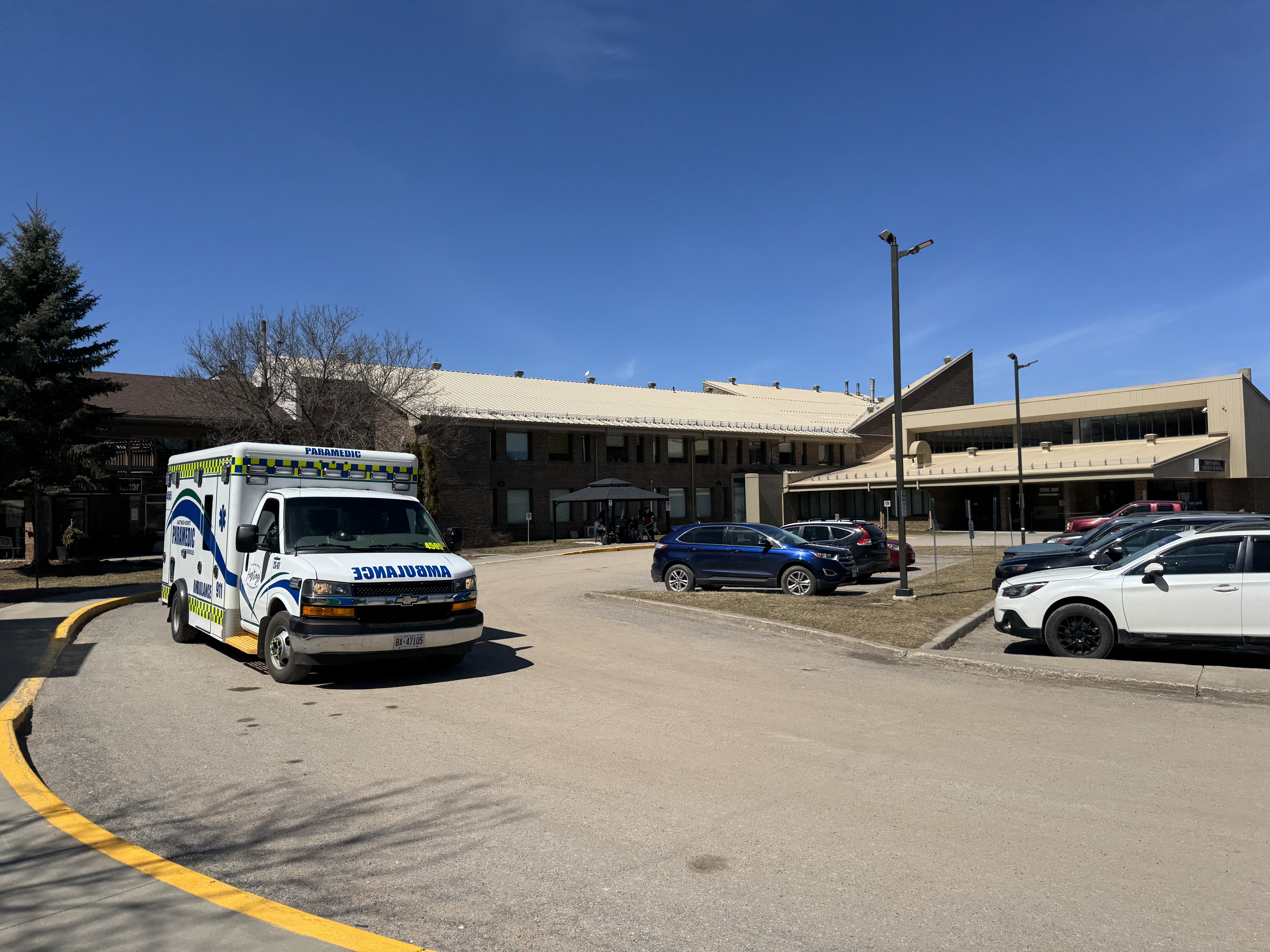Photo caption: A tablet provided to patients as part of the Rural Stop Gap Program which supports them during the critical transition from hospital to home.
By: Joy Lai, Institute of Biomedical Engineering, University of Toronto, Gladys Olisaekee, Dalla Lana School of Public Health, University of Toronto, and Amareena Saleh-Singh, Munk School of Global Affairs & Public Policy, University of Toronto.
In Hastings County, patients are sometimes discharged with little or no immediate support in place. Many of them return home feeling “scared, embarrassed, and unsure of what to do next,” particularly older adults who may not have family or caregivers nearby. Long wait times for in-home care, ranging from several days to over a week, create significant risks for readmission, especially for older adults living alone or in rural geographies that are far from essential services.
The Rural Stop Gap Program, being piloted in Hastings County in collaboration with Quinte Health, addresses the transition from hospital to home with an integrated approach that blends technology, clinical oversight, and community-based care.
As a team of researchers from the Reach Alliance, a research initiative founded at the University of Toronto, we are conducting a qualitative evaluation of Gotcare's Rural Stop Gap Program, a digitally enabled, home-based care model that aims to improve post-hospital discharge outcomes in rural Ontario. The program is being piloted in Hastings County in collaboration with Quinte Health, whose hospital discharge teams identify and refer eligible patients.
Photo caption: North Hastings Hospital, one of the key hospital sites involved in the Rural Stop Gap Program.

Through fieldwork conducted with Health Ambassadors, Virtual Nurses, Occupational Therapists, and program stakeholders, we examine how this initiative supports patients in Hastings County during the critical window from hospital to home.
The model is designed to be relational, adaptable, and patient-centered, focusing on basic needs as well as emotional and social well-being. Trained Health Ambassadors, who are upskilled Personal Support Workers, support patients as they transition back home after being discharged from the hospital. This support includes a range of services in clients’ homes to ensure their safety and to provide client-centered care based on individual needs. Eligible patients may receive a tablet to support care plan adherence, which may include remote monitoring and connection to Gotcare's Virtual team of clinicians. In-person support is provided by Health Ambassadors, who assist with wellness checks, functional living reviews, and care coordination.
Health Ambassadors deliver and set up technology along with comprehensive printed instructions for guidance, step-by-step tutorials, and repeat check-ins. For many older adults unfamiliar with digital tools, this one-on-one support makes the difference between anxiety and autonomy. Even when patients own tablets, they may not understand how to use health apps without support. One Ambassador referred to the tablet as a "safety blanket," framing the device as a protective connection to care rather than a surveillance tool.
Patients also play an active role in shaping their care plans, with each visit designed to help them improve their ability to self-manage safely at home. Virtual Nurses and Occupational Therapists work alongside onsite health ambassadors to facilitate goal-setting conversations that empower clients to identify their priorities, build healthy habits, and gradually take ownership of their health. As one clinician described, “We don’t go in to do for — we go in to do with.”
Health Ambassadors often help enable a soft-landing home by supporting food needs, transportation, or functional living improvements, tasks that will eventually be supported by community providers but are essential to patient stability. Their presence often provides peace of mind to patients and to family members living far away.
Our fieldwork also reveals gendered dimensions of home care. While the program does not explicitly target women, many informal caregivers, often daughters or spouses, experience a higher degree of responsibility and burnout in supporting discharged patients. By involving caregivers in care planning and providing tools to reduce their workload, the program contributes to more gender-responsive care and improves outcomes for the broader care unit.
Initial outcomes are promising. Interviews suggest that the program reduces readmissions, improves patient confidence, and helps clients remain at home longer. At the system level, it relieves pressure on hospitals by expediting earlier discharges from hospitals, decreasing the overall length of stay, and mitigating the number of beds that are deemed Alternative Level of Care (ALC)—people who are medically stable and do not need to be in hospital but remain there because of large gaps in the home care and long-term care system. In doing so, the program also addresses unmet needs that typically fall through the cracks.
Despite these hurdles, Gotcare’s program is earning trust among patients, caregivers, and referral partners. Its hybrid tech-enabled and community-embedded model, where Health Ambassadors live and work in the same areas as their clients, helps build trust and close time to care gaps that large-scale systems and technology alone often cannot. Personalized care, such as leaving step-by-step instructions, offering emotional reassurance, and celebrating small wins, has been essential to building confidence and ensuring meaningful care.
Lessons for Hospital and Health System Partners:
- Transitions are critical. Hospitals can benefit from partnerships that ensure immediate post-hospital discharge support, especially in under-resourced areas and for older adults.
- Technology must be relational. Digital tools are most effective when integrated with in person coaching, consistency, and empathy.
- Local staffing matters. Embedding care workers within the communities they serve increases continuity, responsiveness, and cultural safety.
This research is supported by the DIGITAL Innovation Cluster, with funding from Innovation, Science and Economic Development Canada.